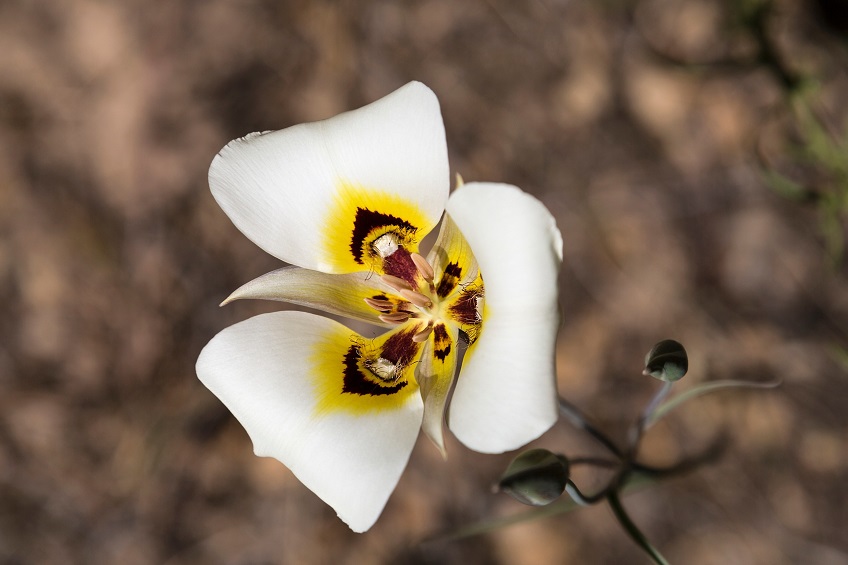


The state flower for Utah is the Sego Lily. These beautiful flowers thrive in Utah’s high desert areas and only bloom through May, June, and July. It was designated the official state flower on March 18, 1911, by the Utah State Legislature. Pioneers and early settlers were able to survive off these plants on many occasions, but they weren’t the first to enjoy the edible plant. After most Utah pioneer’s crops were destroyed in the mid-1800s, Native communities showed them how to use the Sego Lily bulb as a food source. The Sego Lily (sometimes called Mariposa Lily) is considered a sacred plant in many Native communities of the Great Basin area, and they were harvesting the flowers for many years before settler contact. For Northern Paiute, Northern Shoshone, and Bannock communities, the Sego Lily was an especially common food, and they often dug the bulbs in the spring and ate them raw or roasted. Goshute (Gosiute) and Ute communities often dried them to preserve them for the winter. Navajo communities relied on them during times of food scarcity, and the Havasupai communities often enjoyed them with bread. Sego Lilies are part of the Calochortus species, which were all commonly used edible plants in Native communities as a good food source.
You can typically find these dainty flowers in brushy or grassy slopes in dry areas, often close to the Ponderosa Pine or Pinyon-juniper forests. Their elevation range is around 3,000 feet to 10,000 feet above sea level. Many wildlife species enjoy the bulb as a food source as well. Their petals are generally white with the occasional tinge of lilac or pink and they have yellow near the base. They have a slender stem and bear two to four simple, narrow leaves. The fruit is a three-sectioned capsule that splits open to provide flat, yellowish seeds. They have adapted to dry, well-drained soils. If you’re hiking around and find these lovely flowers and want to taste them, make sure they’re truly Sego Lilies. There is a toxic flower called Death Camas that is often confused with Sego Lilies.
If you’re starting with seeds, they require cold-moist stratification (exposing seeds to cold and moist conditions, similar to the natural process of fallen seeds resting under a layer of snow until spring) in order to germinate. One method to try is to plant the seeds in peat pellets and leave them outside from November to February. Then bring them into a greenhouse for the seeds to germinate. The bulbs typically reach maturity in three to five years. Because Sego Lily flowers reproduce by seeds, you can collect the seeds when the capsule are dry and beginning to open. Don’t get discouraged if they don’t take off right away as they are difficult to grow from transplanted bulbs.
Most people today don’t enjoy Sego Lilies by eating them. Rather, they seek them out to enjoy their delicate beauty in contrast to Utah’s harsh desert backdrop. Utah is full of beautiful native flowers, and non-native species can do well when planted in good conditions. For help with successful planting in your yard, visit The Dirt Bag for advice and high-quality products.